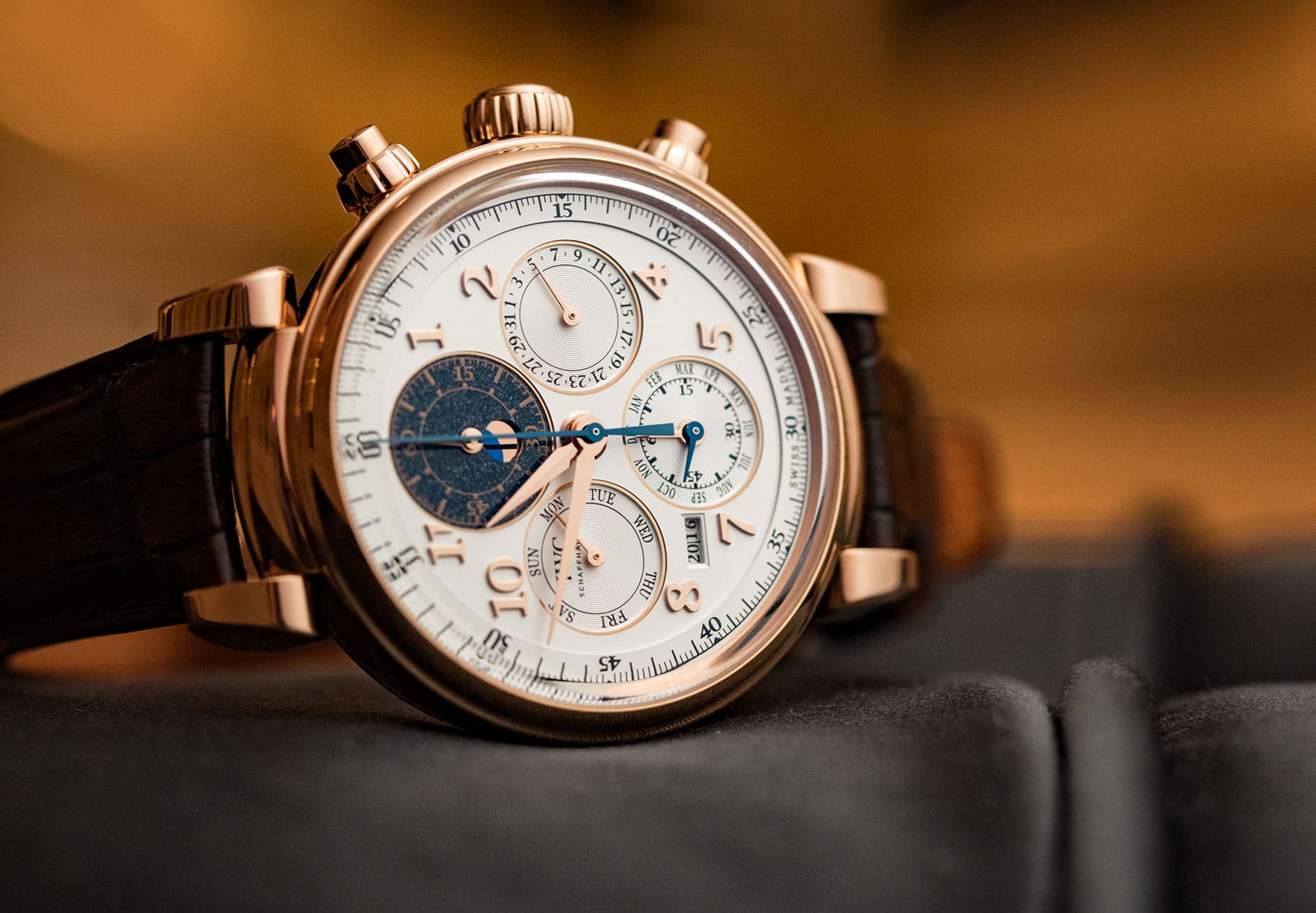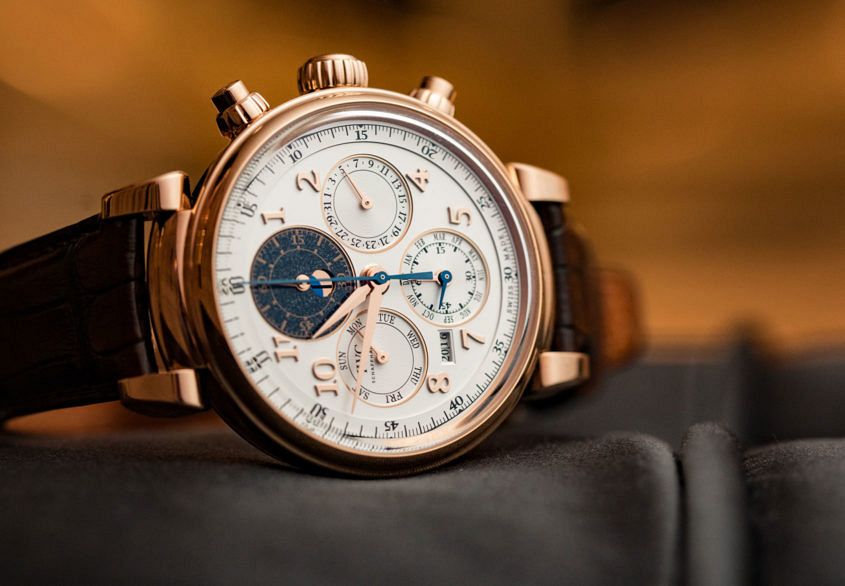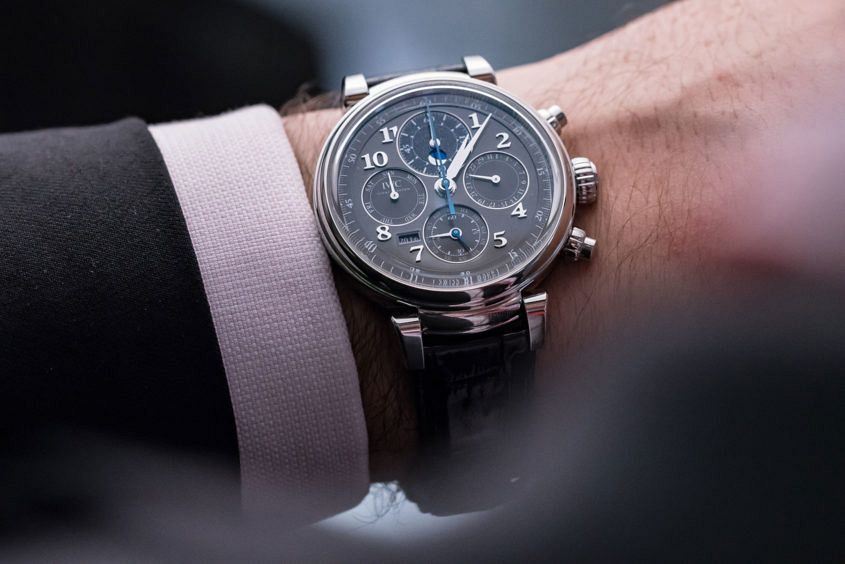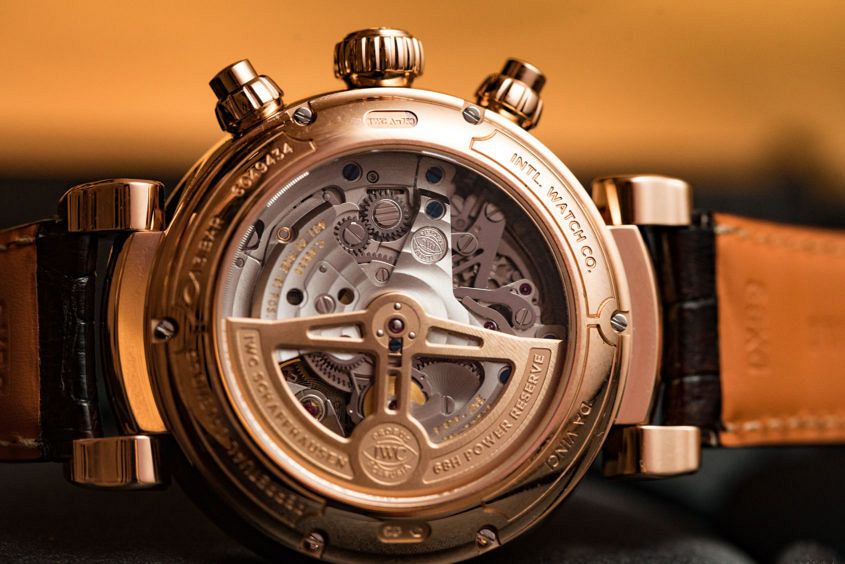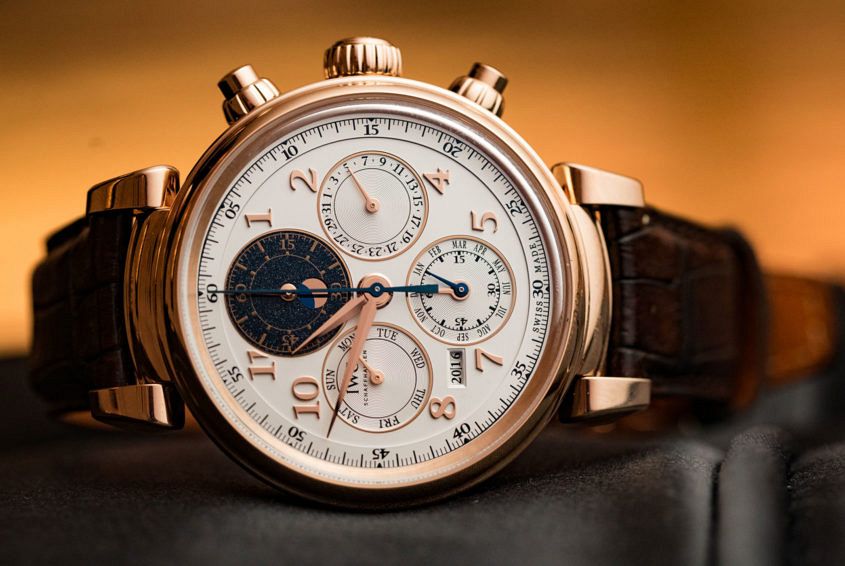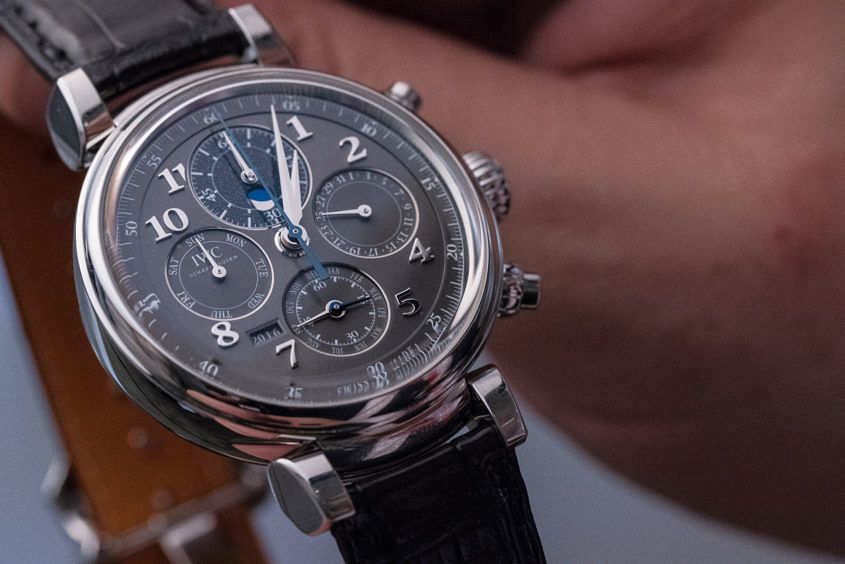INTRODUCING: Return to form – the IWC Da Vinci Perpetual Calendar Chronograph
Cameron WongUntil its relaunch earlier this year, the IWC Da Vinci collection was sometimes overlooked, and unfairly so, as it has housed several “firsts” for the company. First introduced in 1969, it was the first watch from the Schaffhausen manufacturer to feature a quartz movement – the famous Beta 21 – which was the product of a collaboration between 21 of the top Swiss houses, including Omega and Patek Philippe. Then, in 1985 the collection was given new life with the release of the awe-inspiring Da Vinci Perpetual Calendar (ref. 3750). Equipped with a perpetual calendar module developed by IWC’s renowned master watchmaker, Kurt Klaus – which was installed on a heavily modified Valjoux 7750 chronograph movement – it was the first perpetual calendar movement on which all complications could be set using only the crown.
This year, as well as returning to the round case with articulated lugs design of the 1980s, IWC has released a faithful tribute to the iconic ref. 3750 – the Da Vinci Perpetual Calendar Chronograph – which, in another first for the manufacturer, combines the chronograph hours and minutes counters, and a moon-phase complication on a single subdial at 12 o’clock. To achieve this, the engineers at IWC designed the brand new calibre 89630 perpetual calendar movement. Built on the architecture of their 89000 family of movements, not only is it a column-wheel, vertical clutch, flyback chronograph with a 68-hour power reserve (which is still maintained even with continuous use of the stopwatch), but it also has a date, combined small seconds and month indicator, and day function all displayed on three separate subdials at 3, 6 and 9 o’clock respectively. Try saying all that with one breath.
In addition, and just like its iconic ancestor, the four digit year is displayed between seven and eight o’clock, and all perpetual calendar functions are controlled via the crown — including the moon-phase, which is accurate to only a single day’s divergence in 577.5 years. Adding to that precision, the calendar takes into account the different lengths of months, even during leap years, and only needs to be manually adjusted at the changing of each century on the 1st of March. Yep. There’s a lot going on.
The case of the new Da Vinci Perpetual Calendar is available in either stainless steel or 18-carat red gold and measures in at a sizeable 43mm x 15.5mm. Considering the amount of information on display, this is not unexpected. On top of that, depending on which case material you choose, the dial will either be silver-plated for the gold, or slate for the stainless steel. However, with large, case-colour matched Arabic numerals and hands, the dials are quintessentially IWC — their harmonious quad subdial layout, busy without being cluttered. They’re not overly ornate either, with a classically pure focus on the technical capabilities of the watch — an exception to the rule being the dark night-sky blue subdial at 12 o’clock, sprinkled with white gold starry specks which sets off the moon-phase aperture while cleanly presenting the hands of the combined chronograph totaliser.
The 2017 IWC Da Vinci Perpetual Calendar Chronograph brings with it the same charm and excitement that the original stirred up in 1985. With its combined mix of traditional and contemporary aesthetics paired with the impressive technical innovations inside, it returns Da Vinci to its roots.
IWC Da Vinci Perpetual Calendar Chronograph Australian pricing
IWC Da Vinci Perpetual Calendar Chronograph in steel $43,500 in red gold $58,400




